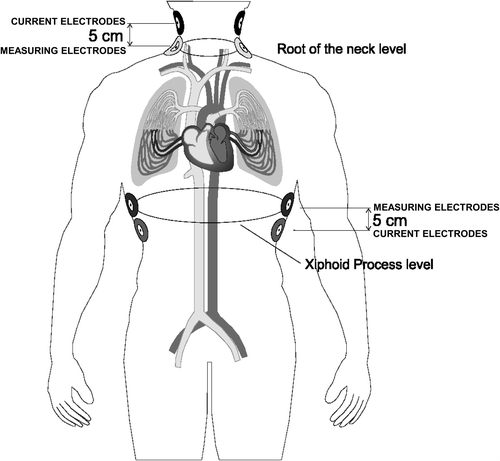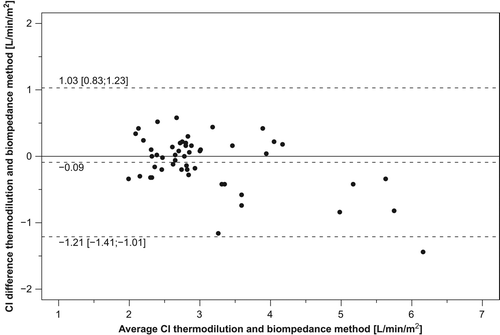Figures & data
Figure 1. Illustration of the electrode arrays for the thoracic bioimpedance system used in the validation study. Position of current injecting electrodes and voltage measuring electrodes is reported.

Figure 2. Plot of the 255 pairs of cardiac index (CI) estimation derived by bioimpedance (y-axis) and thermodilution technique (x-axis). The continuous line refers to the line of complete agreement (identity).

Figure 3. Plots of difference in cardiac index (CI) estimation between the reference (thermodilution) and test method (thoracic electrical bioimpedance system) (y-axis) vs the average cardiac index value of test and reference method (x-axis). Data are shown for the 51 cardiac patients. Dashed lines refer to bias, and upper and lower limits of agreement.


